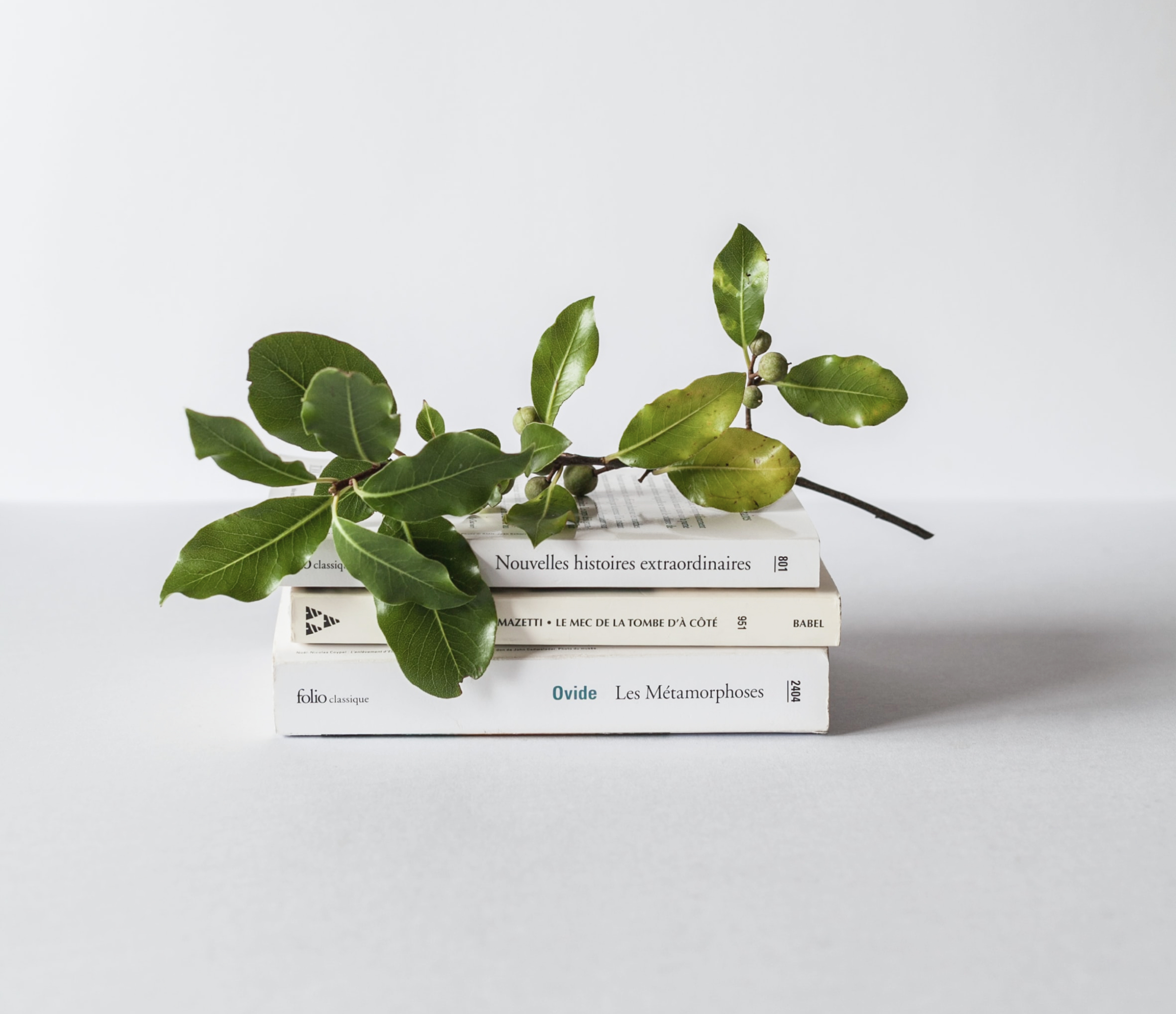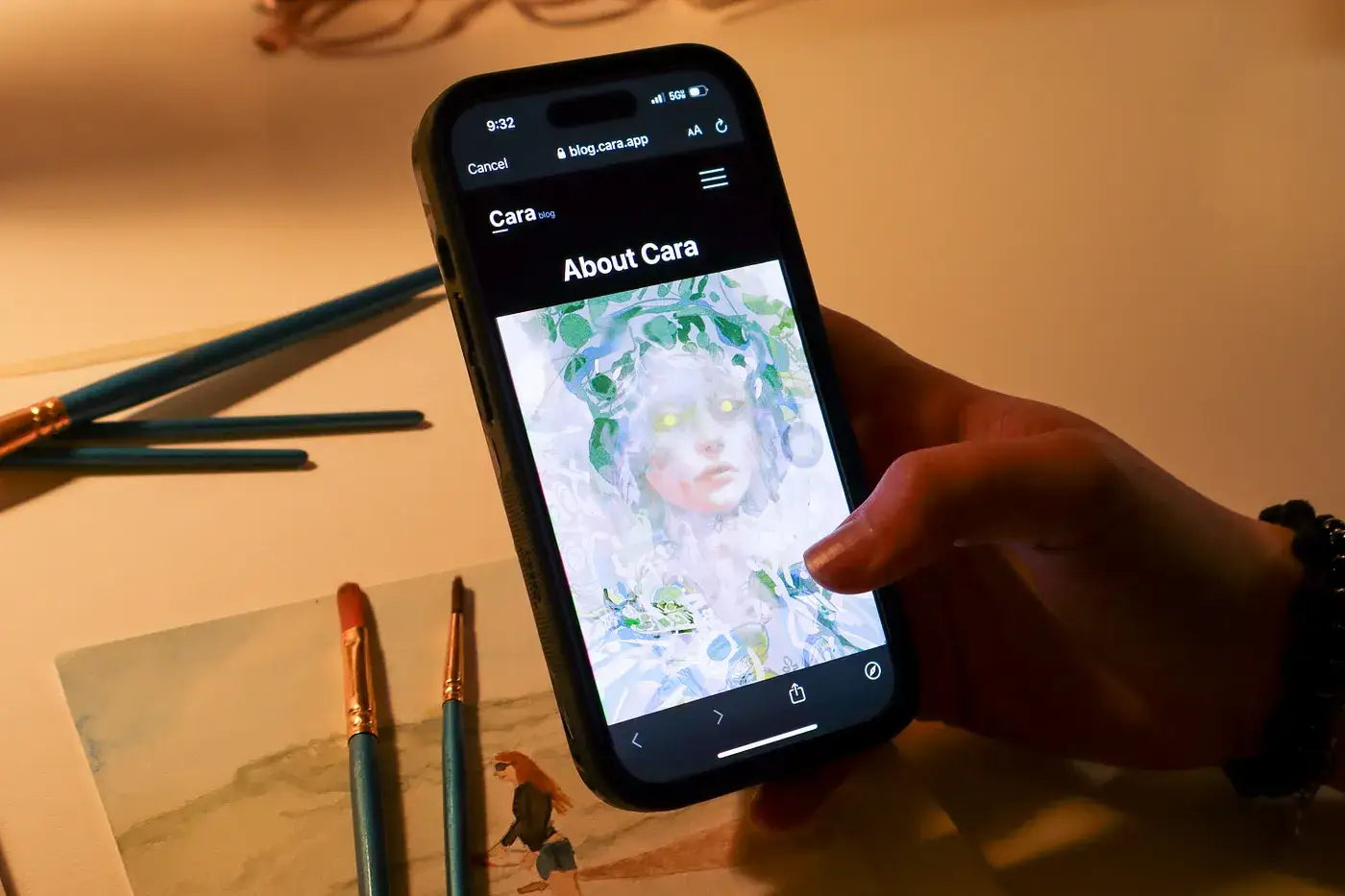Artists Push Back Against AI
Artists forge solutions in the fight for artistic ownership in the face of AI-generated imagery.
By Julia Carden
Marianna Smith sits in her brightly lit studio, surrounded by worn sketchbooks and prints of her detailed illustrations up on The Hill at Syracuse University. She scrolls through images on HaveIBeenTrained.com, an online tool that can search more than 5.85 billion images from datasets used to train AI. Smith was driven to check the database after hearing a visiting artist lecture on art copyright law. She types her name in the database and hits “search.”
“That’s my logo. That’s my artwork. That's my artwork,” Smith says, pointing as she scrolls. The search results yield two images of her copyrighted business logo and three of her original children’s illustrations including “Bye Bye Balloon,” “The Velveteen Rabbit 1” and “Dolphins and Mermaids.”
Now, she can mark them for the Do Not Train Registry. But, content in existing datasets cannot be removed. The artwork exist in network systems used to generate imagery trained on millions of stolen works, created by human artists, and taken without consent. “This completely strips artists of their agency over their work, it’s a punch to the gut,” Smith says as she leans back in her chair.
Digital artists like Smith are feeling the impact of generative artificial intelligence, which raises both creative and ethical concerns. Several text-to-image AI platforms including DeviantArt, Runaway AI, Stability AI, and Midjourney have used art from non-consenting artists to train their AI systems without permission or compensation.
In January, a list containing the names of more than 16,000 artists allegedly used to train Midjourney AI leaked from a first-of-its-kind copyright lawsuit against the popular AI systems. Among the named artists are past masters like Andy Warhol and Norman Rockwell, and working artists like Aaron Riley.
This issue transcends aesthetics, posing a threat to artists' livelihoods and ownership rights. In a survey by Book an Artist, nine out of ten participants expressed concerns regarding “outdated” copyright law, noting that they do not feel protected from generative AI under current copyright law. About 55% of artists think that AI will negatively impact their ability to generate income. Now, artists and professionals working in creative industries are adopting protective measures to minimize the implications of invasive AI tech.
HaveIBeenTrained.com is one of several new tools emerging out of response to ethical copyright issues presented by AI. Cara is another. The platform is an online community for sharing artwork. Developers launched Cara in 2022 and implemented the AI poisoning tools Nightshade and Glaze to protect all posted content from unauthorized use.
Cara is a social media and portfolio platform for artists in the entertainment industry. The platform was launched in 2021 as a response to AI scraping.
Photo by Julia Carden
Engineer Jacob Robson-Tull has worked for Cara since its inception. He decided to get involved because of his background as an artist and a coder. He described Cara as a “passion project” built by volunteers. The site uses AI image detection, user validation, and content moderation to keep the platform clear of AI-generated content and protect posted content from AI scraping.
“We put protections in place in our code to try and make it harder for computers to scrape websites and use them for training,” he said. Today, the social media and portfolio platform hosts more than 40,000 users.
While other online communities for artists exist, Cara was one of the first to take a hard stance against AI-generated content. Other platforms, like DeviantART, let tech companies scrape data from the website without users’ consent. Cara offers haven from corporate art platforms that accept content regardless of its origin.
“By having a community that prioritizes those values, artists can feel safer posting their artwork,” Robson-Tull explained.
Photographer Zhang Jingna created Cara after her artwork was used to train AI. In response, she joined the lawsuit against Stability AI, DeviantArt, Midjourney, and Runway AI. These platforms allow users to generate content based on images downloaded from the internet. Since the technology is trained on existing data, the generated art often resembles the distinctive styles of artists.
“To my fellow sisters and brothers in creative industries affected by this exploitation of our work, I hope this case can continue to give voice to the countless thousands of us, and set a legal precedent that makes things right,” Zhang wrote. Cara developers won’t consider hosting AI-generated content unless the ethical and data issues are resolved.
South Carolina-based artist Aaron J. Riley is on the list of artists leaked from the Midjourney lawsuit. As a freelance digital artist, he creates sci-fi and fantasy artwork for clients like the Magic: The Gathering video game and playing cards. According to Riley, Magic artists were common victims of AI scraping, with many contributors appearing on the list.
Artists are growing increasingly worried that clients will opt for free AI-generated artwork rather than paying artists to do the work. “AI is simply stealing hours of hard work, and people know that, because why pay an artist for hours of commission when they can get it quick and free?” Pittsburgh-based animator and studio artist Alexis Raine said. “Companies that once promised to keep using artists have been called out for using AI.”
On January 4, Magic: The Gathering posted an image of its playing game cards to X (formerly Twitter) against a steampunk-style background. Users quickly flooded the comments accusing the platform of using AI. Initially, the publishers denied the use of AI. A few days later, they posted again, admitting that they used AI. Both posts have since been deleted.
In its contracts, Magic prohibits contributors from using AI generative tools. The game’s publisher, Wizards of the Coast, banned the use of AI artwork in 2023. The company’s use of automated artwork left many with a sour taste, causing some artists and players to step away from the enterprise entirely.
Riley believes AI-generated art will impact concept artists like him, who dream up and design characters and ideas for film and animation, along with less-established artists. “I don't have 12 million followers so nobody's putting my name at the top of the list,” he said. “What am I gonna do? Screaming into the void isn’t going to stop anything.” He isn’t taking legal action at this time and says many artists don’t have the time or money to fight copyright infringement committed by AI giants.
"Forgotten Realms Commander" Designed by freelance illustrator Aaron J. Riley for Magic the Gathering.
WOTC” TM © Wizards of the Coast
Data scientist Rumman Chowdhury emphasized the need for improvement in the training and the application of AI in a lecture on generative AI and humanity at Syracuse University. Having spent a decade working in data, Chowdhury sees the promise of artificial technology. However, she emphasized that the AI industry cannot fully succeed until stakeholders address the underlying ethical issues.
“We have to ensure this technology is built to serve people, not the other way around,” Chowdhury said.
About two years ago, when working in a neuroscience lab at the University of Albany, philosophy professor Alessandra Buccella noticed researchers using machine learning models to analyze data. The experience sparked her curiosity about human interactions with AI. Now, she studies the social, political, and ethical implications of generative AI. Her research involves the intersection of philosophy and artificial intelligence.
“AI systems that make predictions, translate text, generate images, and much more are ubiquitous in modern life,” Buccella wrote in Preprint. “But they also tend to be black boxes, in the sense that even experts in machine learning don’t understand how they arrive at their output.”
Buccella and Chowdhury agree on the need for better regulation of artificial intelligence in the United States. In December, Chowdhury testified before the House Committee on Oversight and Accountability:
“Artificial intelligence is not inherently neutral, trustworthy, nor beneficial,” she told Congress. “While it has immense capability, like many other high-potential technologies, it can also be used for harm by both malicious and well-intentioned actors.”
Research shows that these platforms don’t just stumble—they trip spectacularly, and often. Popular AI tools like ChatGPT and MidJourney exhibit harmful flaws, including racial and gender biases, falsieties, and cybersecurity risks.
"Left running on its current trajectory, generative AI will reinforce the disparities within society with disastrous implications for those already marginalized groups and people," writes Dan McQuillan, researcher and author of Resisting AI: An Anti-Fascist Approach to Artificial Intelligence.
Aside from ethical concerns, AI-generated art lacks the depth and nuance that characterizes human-created artwork. Many artists argue that creativity is an inherently human process that machines can’t quite replicate.
“The best of what’s made with AI is the best of us reflected – oftentimes taken without consent, taken without compensation, and taken without artists having any kind of real control,” said Joy Buolamwini, founder of the nonprofit Algorithmic Justice League.
Mattie Welteroth has been an artist since she could pick up a crayon. Today, she is a professional graphic designer and ceramicist, drawing inspiration from human connection.
“A computer is never going to be able to understand the human experience,” she said. Welteroth said “her heart dropped” when the Midjourney list surfaced, and she plans to AI-protection tools to her artwork moving forward.
Copyright law safeguards the original works of authors, artists, and creators, ensuring that owners maintain control over their intellectual property. Copyright also guarantees that owners are fairly compensated for the use of their work. Artwork generated by artificial intelligence is not currently eligible for copyright protection in the United States.
“When I create my own artwork, it’s mine,” Riley said. “It’s my right to use it how I wish. If I don’t want to be compensated for something – that’s fine – but it's my choice.” Riley hopes that AI art will fade out and follow a trajectory similar to Non-Fungible Tokens (NFTs), which experienced a rapid rise and fall after sparking concerns from artists.
“Art always survives, somehow,” Riley said.
In June, Smith announced she will no longer be posting her artwork on Threads and Meta platforms. Instead, she joined Cara. “In light of Instagram using (stealing) artists’ work to train AI and not giving artists in the USA the ability to opt out of this training, I’ve deleted my Threads account and am in the process of moving to Cara,” she wrote on Instagram.
“The post-AI world we’re living in is pretty scary,” she added, acknowledging AI’s impressive capabilities in churning out animated images and mimicking artistic styles. Yet she affirmed her belief that machines can't quite replicate the creative process that is human artistry.
Many artists and ethicists agree that responsible regulation of artificial intelligence could help ease public anxiety and mitigate the risk of copyright infringement affecting artists. Some, however, are steadfast in their opposition. Oscar-winning filmmaker Guillermo del Toro, for instance, told NPR in an interview: “AI, particularly generative AI, I am not interested in using. I’d rather die.”




